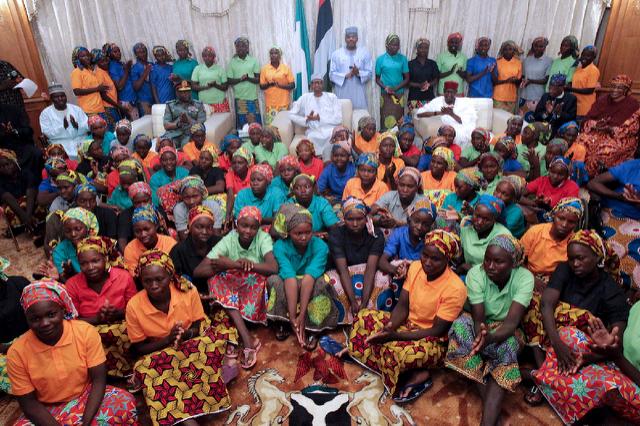The three-year anniversary of the Chibok abductions and the recent release of the largest number of captive schoolgirls by Boko Haram terrorists is an ideal time to assess the status of this infamous abduction especially in the context of a new administration in Nigeria that recently clocked two years in office.
- Historical Significance of the Chibok Abductions
The Chibok abductions is situated in the following historical context:
- The mass abduction garnered global attention and firmly put the world’s deadliest terrorist group in focus of the international community
- The abduction led the United Nations to impose sanctions on Boko Haram in 2014 which the UN failed to do even after being itself a victim of a BH suicide bombing. The Augusta 2011 attack which claimed two dozen lives was one of the worst attacks on the UN in contemporary history.
- The mass abduction was a critical catalyst for the crisis of confidence in president Jonathan’s administration which led to his historic defeat and a rare smooth transition from an incumbent to an opposition party in Africa.
- The abduction was a campaign issue and promises to rescue the girls and end the insurgency propelled a motley opposition party to power. President Buhari benchmarked his administration’s victory over the terrorists as incomplete without the rescue of the schoolgirls.
Given the above, an assessment of the status of the Chibok girls which is a bellwether in the annals of the Boko Haram insurgency as the Buhari administration clocks two years, is a barometer on the overall state of the insurgency and responses there to.
- Chibok By The Numbers: A Timeline of Events
- April 14, 2014 – Abduction of 276 schoolgirls from Chibok school
- April 21, 2014 – Return of last of 57 girls who escaped – 219 Missing In Action (MIA)
- May 29, 2015 – New president at inauguration vows that war is won only when girls are back
- May ? 2016 – First girl to escape in 2 years, Amina Alive arrives with baby – 218 MIA
- October 12, 2016 – 21 girls, plus baby, freed in first ever negotiated release – 197 MIA
- November 5, 2016 – Second girl in over 2.5 years, Mariam Ali, returns with baby – 196 MIA
- January 5, 2017 – Third girl in over 2.5 years, Rakiya Abubakar, returns with baby – 195 MIA
- May 6, 2017 – In first ever prisoner exchange, 82 girls swapped – 113 MIA
- CHIBOK LEXICON: A GLOSSARY OF KEY DEFINITIONS
For purposes of clarity the following glossary is provided of the various groupings of Chibok girls by defining nomenclature:
- “Escaped girls” – this refers to the 57 schoolgirls who escaped during the abduction or 48 hours in April 2014
- “Escaped women” – this refers to the three former schoolgirls who escaped with their children born in captivity after two years in May and November 2016 and January 2017
- “Freed girls” – this refers to the 21 girls released by the terrorists in October 2016 in the first ever voluntary or negotiated release.
- “Exchanged girls” – this refers to the 82 girls swappedby the terrorists after 3 years in May 2017 in the first prisoner exchange deal
- “Missing Girls” – this refers to the 113 captive schoolgirls still unaccounted for from the original group of 276 abducted by the terrorists
- “Chibok girls”- this refers to the original group of 276 girls abducted in the mass kidnapping from Govt Secondary School Chibok in 2014 by Boko Haram
- “GSS Student” – this refers to all the female and male final year students who attended that school













